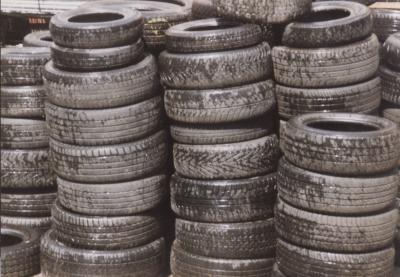The aim now, he said, should be “more and more recycled content”.
In a session devoted to a panel discussion on tyre pyrolysis which Mr Craipeau co-moderated with Martin von Wolfersdorff, Principal Advisor of Wolfersdorff Consulting in Germany, three guest participants all confirmed that they had secured healthy forward commitments to their high-quality recovered carbon black products. One of these panellists – Frank Cremer, Technical Sales Manager of US-based Bolder Industries, Inc. – also highlighted his company’s ongoing development of its first EU facility (in Belgium) whose production is to include BolderBlack, produced from 100% post-consumer or post-industrial tyres and rubber scrap.
Pieter ter Haar, Director of Research and Development at UK-based Circtec, underlined the difficulties of building a sustainable venture in Europe as “funding rules are not set up for new industry” and frequent regulatory changes created an uncertainty that could often deter investors.
In a business involving high levels of capital expenditure, he said, it was crucial to secure support from “offtakers”. Having also noted that typically around a quarter of plant investment went into filtration in order to capture toxic emissions, the panellist said that a sustainable approach was essential and would enable a “move away from the bad reputation that pyrolysis and tyre recycling as a whole have had”.
Pyrolysis had become “very complex” and required “high investments to ensure the technology will deliver what is needed”, agreed Ad van Oorschot, Sales and R&D Director of Black Bear Carbon in the Netherlands. Having outlined that his company’s process typically yielded 35% carbon black and 40% oil as well as gas that helped to make the operation energy-neutral, he added: “Basically, we recover 98 to 99% of the tyre.”
Mr Von Wolfersdorff observed that Europe’s focus on recovering carbon black was generally different to that found in some other parts of the world, where efforts were concentrated mainly on oil recovery.
Having explained that minimum content mandates had proved highly effective within the plastics sector “because brands have no choice but to have recycled content”, Mr Craipeau asked whether this might be an effective tool for the tyres sector. In response, Mr Ter Haar expressed concern that tyre manufacturers might look for lower-quality recycled content from other parts of the world. “You should recycle your own tyres in your own region,” he insisted.
Having heard Mr Von Wolfersdorff suggest it would be helpful to have Europe-wide harmonization of rules and regulations, such as with the end-of-waste definition, Mr Cremer and Mr Ter Haar highlighted the lack of a platform for tyre pyrolysis operators to express their expert opinions.
Feedback from the audience in Amsterdam included confirmation from Antonia Biggs, General Manager of the Chilean Association of Recycling Industries (ANIR), that her country had introduced extended producer responsibility for tyres, including a requirement that, by 2030, all mining truck tyres above a certain size must be 100% recycled.











